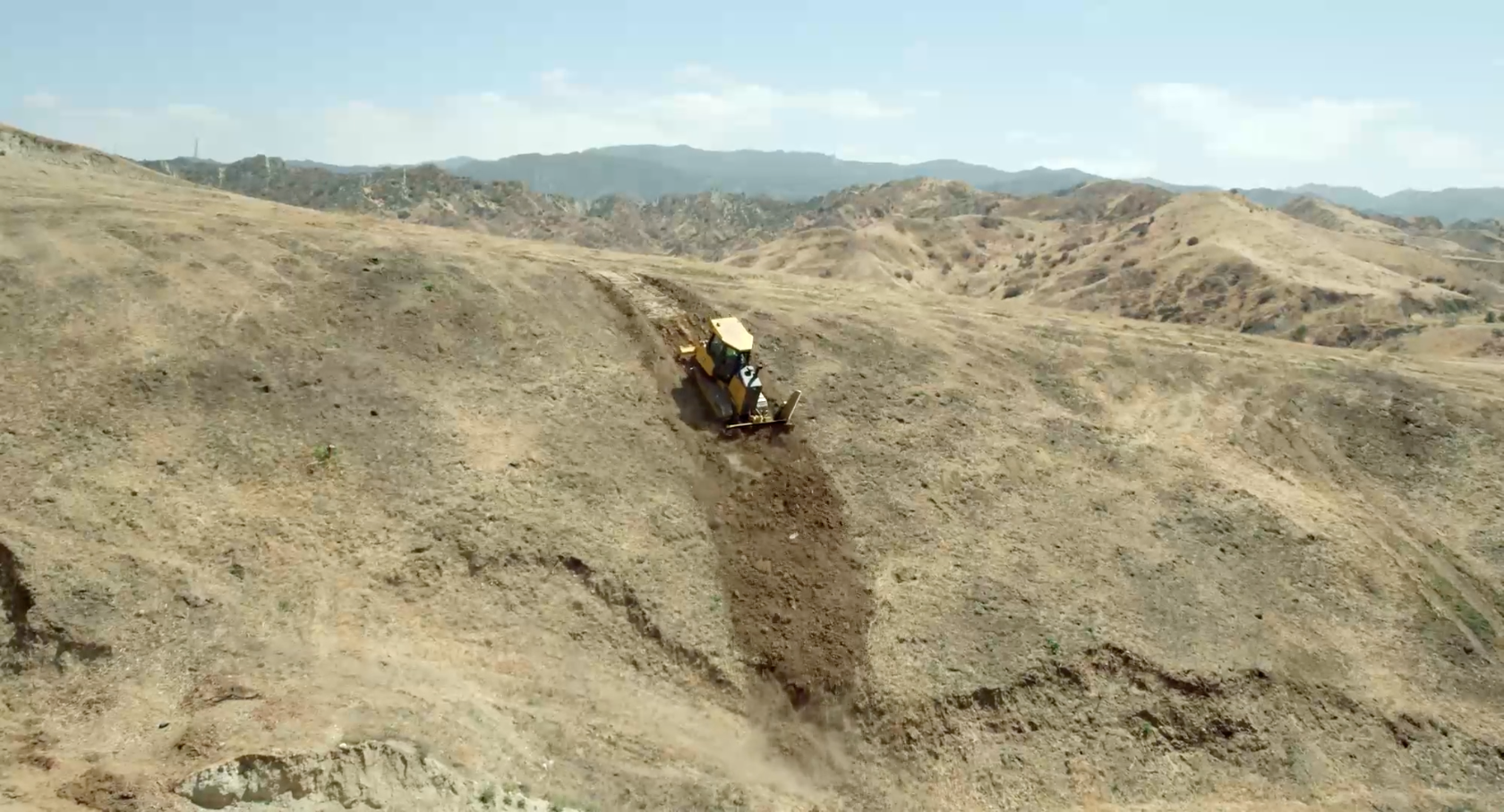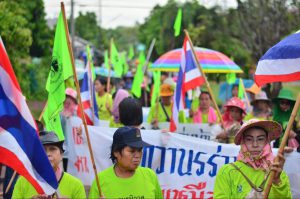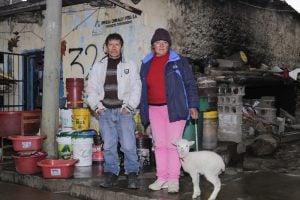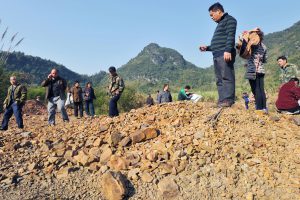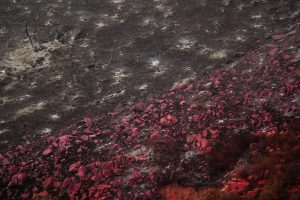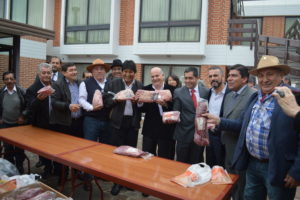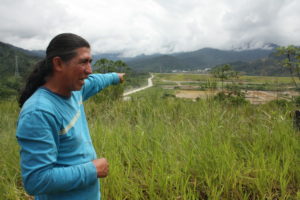“I’ve been on jobs where I’ve had to rip down acres and acres of trees. Sometimes I feel bad. But you gotta move forward for prosperity.”
Steven Kuzar is standing in front of the Caterpillar truck where he spends his weekdays moving mountains. Developers have hired him to chip away at the high terrain surrounding the San Fernando Valley to enlarge California’s buildable area.
“Once we get there it’s not nature anymore. It’s work. It’s a project,” he says. “The Earth is definitely a cruel mistress. She fights us every bit of the way. That’s why we have big machines with a lotta horsepower. We fight back.”
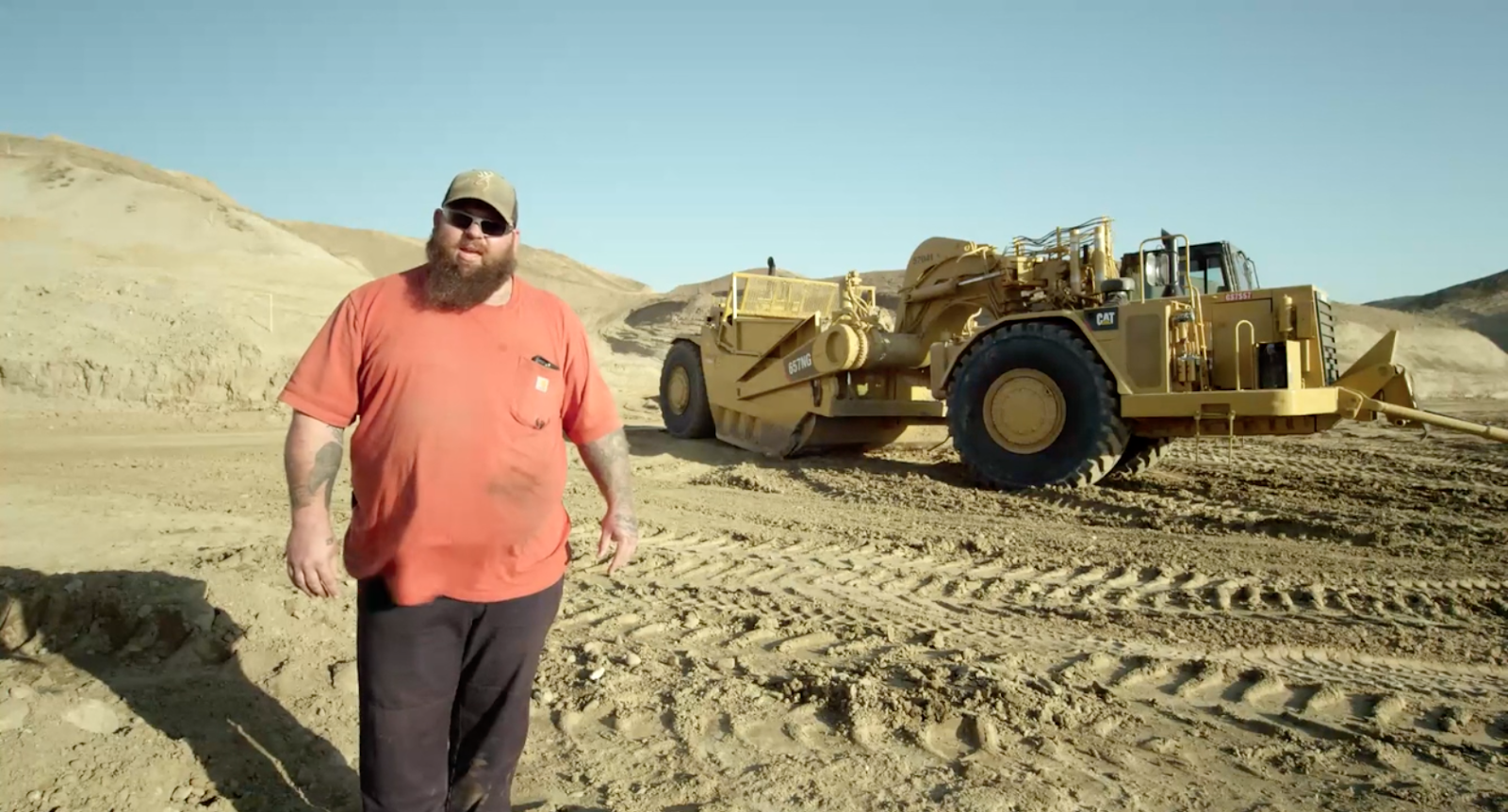
San Fernando, California (Image: Nikolaus Geyrhalter Filmproduktion GmbH)
San Fernando is the opening location of Earth, an extraordinary documentary by Austrian filmmaker Nikolaus Geyrhalter, featuring seven places around the world where the planet’s crust is being dug, drilled, blasted or otherwise cut into. Satellites and drones show the jaw-dropping scale of mining operations today. Each location looks at first like a battlefield captured by a spy plane. Then the camera zooms in to reveal a quarry teeming with yellow ant-sized vehicles. But the film’s real focus is on the next level in: the people who drive the trucks and work the mines.
Steven Kuzar enjoys being well paid to indulge his childhood passion for diggers. Meanwhile in Italy, the marble miner Francesco Muscolini takes a discomfiting adult pleasure in his work: “We get to touch this material which no one has ever touched before… the outer crust is like the virginity of the mountain.” And in Hungary, coal miner Jozsef Köles is deeply moved by the strength and beauty of the unyielding million-year-old trees his gigantic bucket wheel excavator occasionally tears its teeth on.
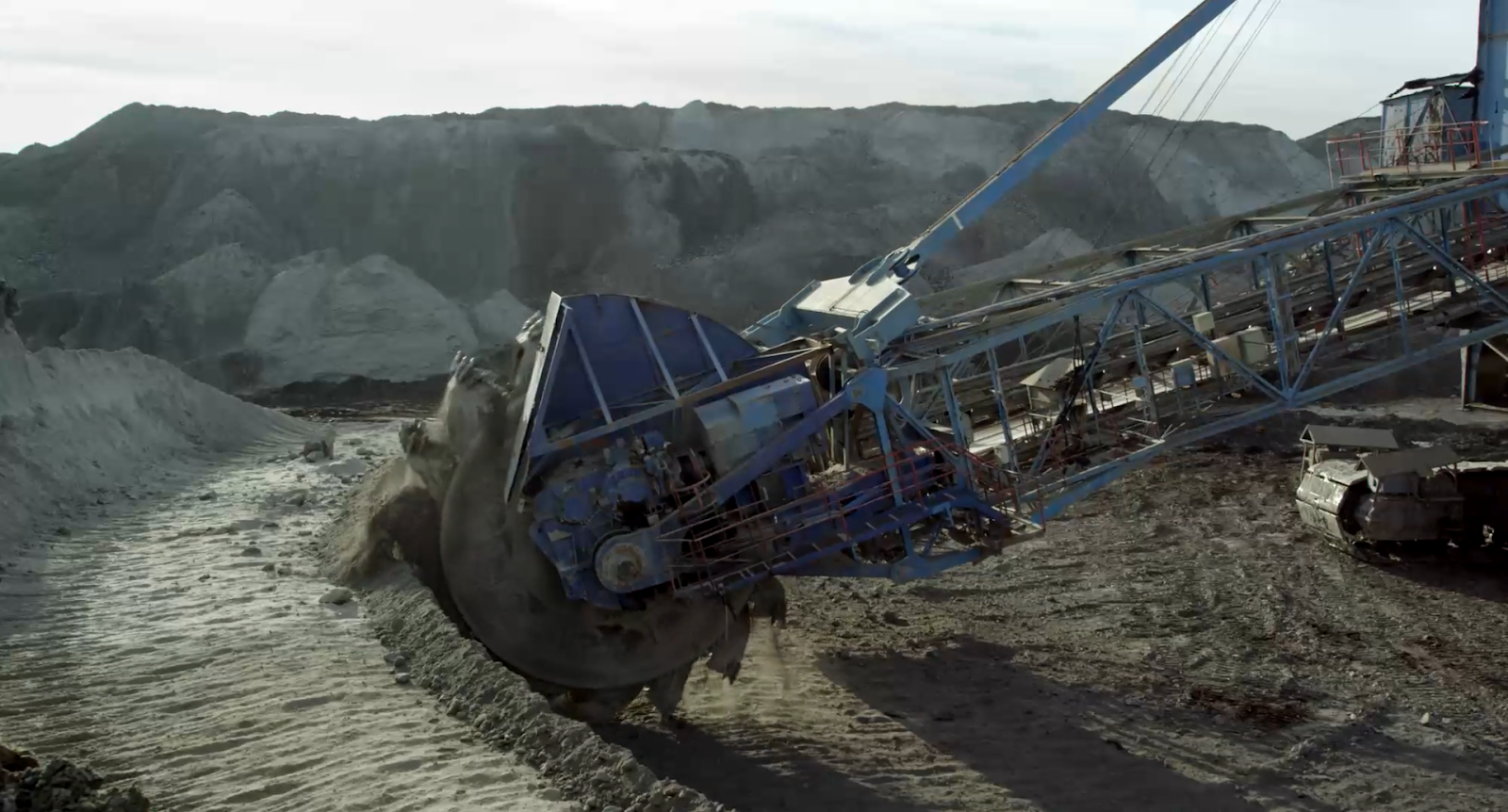
Coal mine, Gyöngyös, Hungary (Image: Nikolaus Geyrhalter Filmproduktion GmbH)
Earth could be seen as a prequel to Geyrhalter’s Homo Sapiens (2016), a haunting film of places around the world abandoned by people – theme parks, tower blocks, churches – none identified by location. That film offers a glimpse of a post-human future where nature has “fought back” or calmly re-established its dominance. By contrast Earth is about the activity that is most viscerally nudging us towards the brink of that humanless future – industrial mining.
Extraction of fossil fuels and other minerals is a primary influence on the Holocene’s redefinition as the Anthropocene.
We learn at the beginning of the film that humankind moves 156 million tons of rock and soil each day, making us “the most decisive geological factor of our time.” Earth is a brilliant attempt to show us what that really means on (and for) the ground.
The film is almost as interested in past ages as with the present one. As their tools have become more efficient, miners have become deeper time travellers, following seams ever further into the rocky calendar of prehistory. Geyrhalter visits Minas de Ríotinto in southern Spain, where copper has been extracted since the days of the early Roman Empire. But archaeologist Carlos Amijados Sanchez reminds us not to romanticise the journey:
“Everything related to resources is done with violence. Earth offers us limited resources in a generous manner – I’m talking about fruits and forest resources – everything else needs to be won in a pretty violent way.”
Svyatoslav Babyuk is boring the longest tunnel in the world, through the base of the Alps to connect Austria with Italy. He says he feels like an astronaut, seeing spots no one has before, and is sensitive to the strangeness of the collision between slow geology and rapid technology. “Nature has taken millions of years to form these rocks. Now we try and drill through it for our own benefit in the blink of an eye. We drill and hope nature will play along.”
A 22-kilometre conveyor belt shifts rock from the sharp end of the tunnel where Babyuk works onto a mound outside the entrance. The chipped rock streams down like sand in an egg timer, coincidentally the logo of Extinction Rebellion.
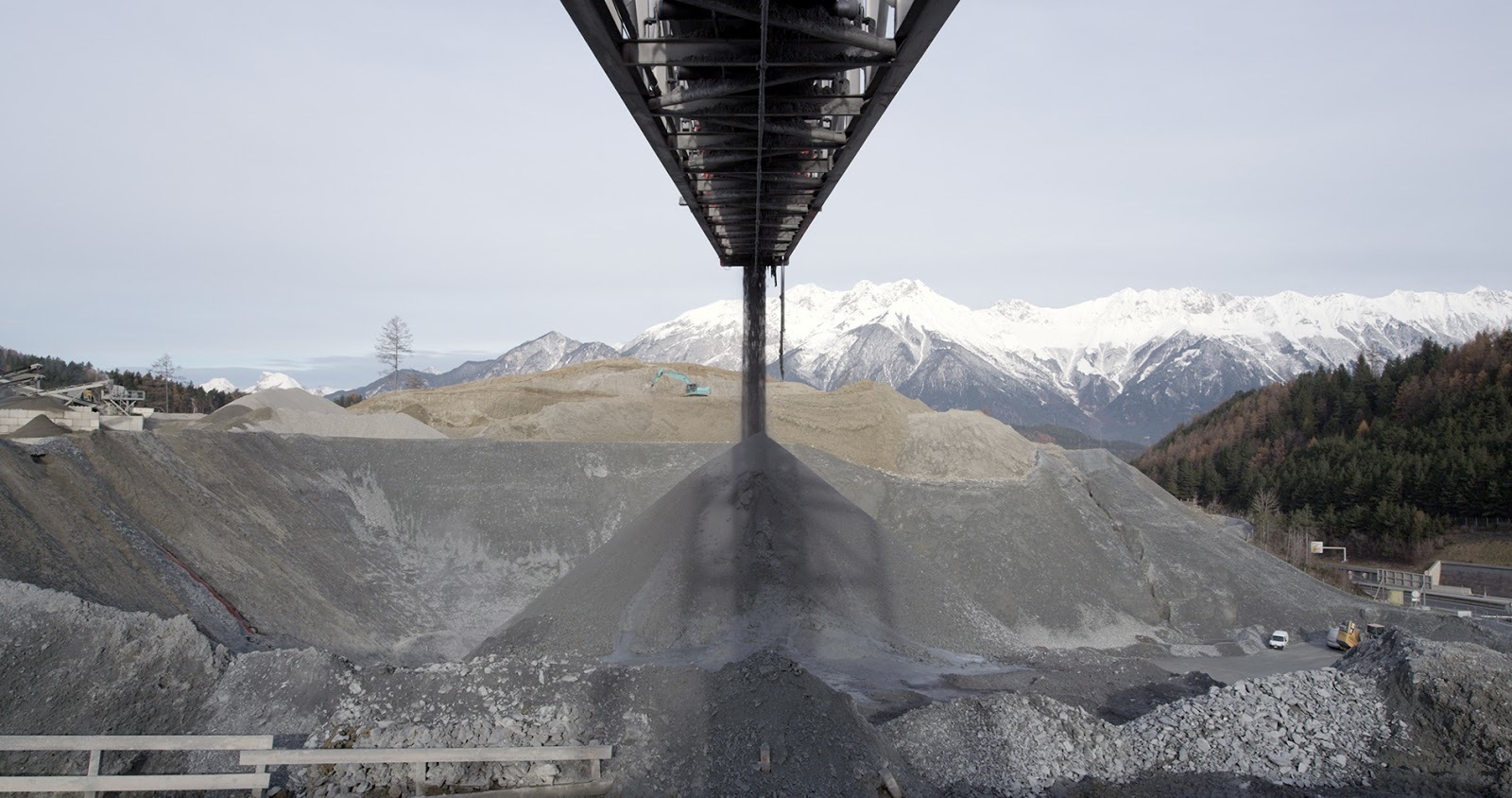
Brenner, Austria (Image: Nikolaus Geyrhalter Filmproduktion GmbH)
In Hungary, Jozsef Köles tells us how happy he is that coal mining nowadays pays him enough to take occasional holidays cycling in the mountains. Though once up there he is shocked and depressed to see how far the glaciers have receded in the 50 years he’s been alive.
While Franscesco Muscolini is addicted to the adrenaline of mining marble, he does also feel some sympathy for the mountains: “Of course it hurts… Over the past 30 years, since we started using this technology, the mountains have become way lower. Today we work so much faster than we could before. Back then, cutting a block took two whole days. Now the same job only takes one hour.”

Marble quarry, Carrara, Italy (Image: Nikolaus Geyrhalter Filmproduktion GmbH)
Earth sometimes seems more like a slowly cycling slideshow of images than a piece of cinema. It echoes Josh Haner’s aerial photographs of places impacted by climate change, which Haner similarly mixes with close-up portraits of those affected. Edward Burtynksy’s pollution photographs may also be an influence. In China, Lu Guang is another master of photographing the impacts of industrial activity.
All the mines in Earth are located in the Global North, which has stricter regulations and generally better environmental and safety records. The situation of journalists documenting mining operations in the Global South is often perilous.
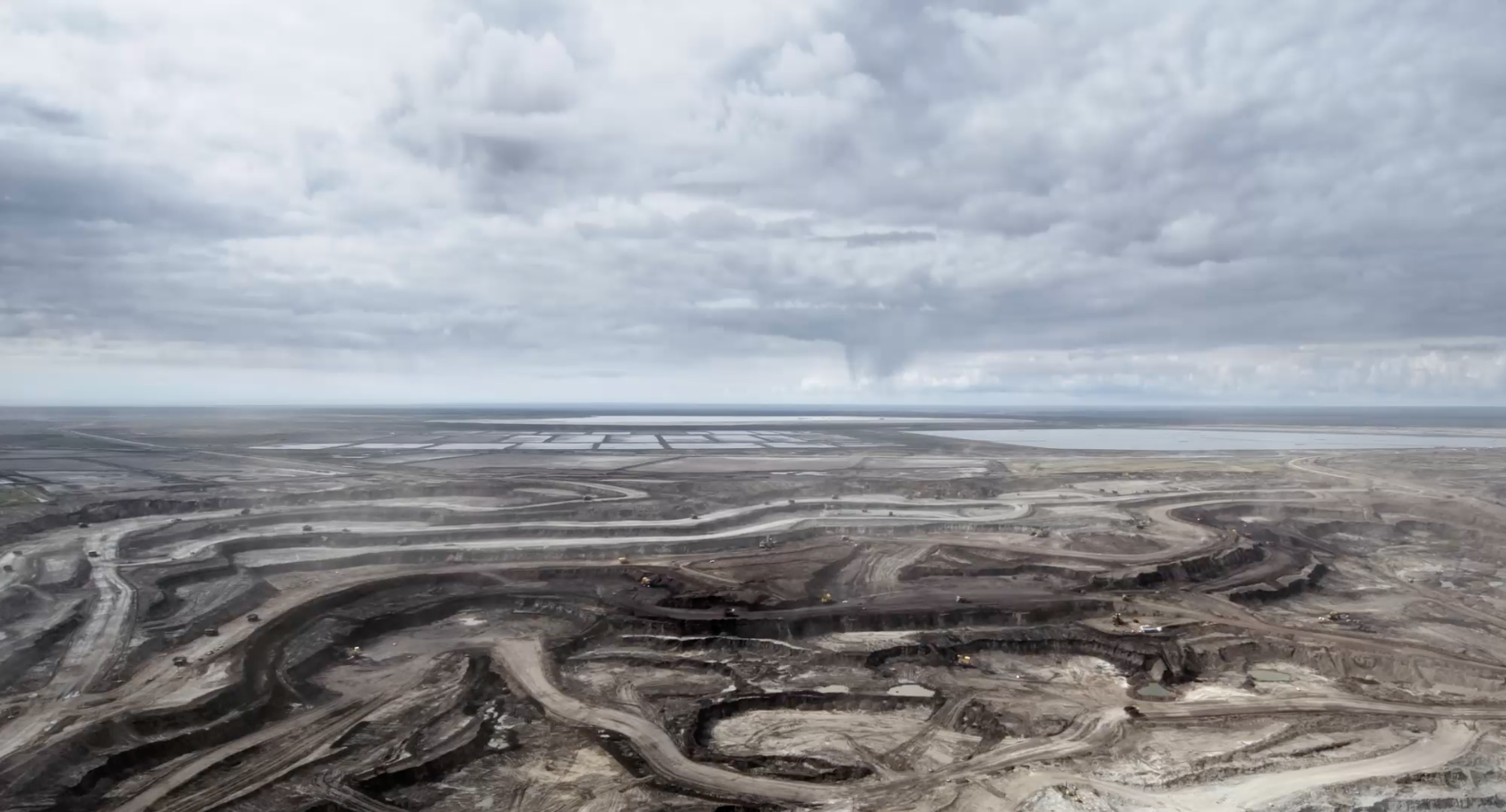
Oil sands, near Fort McKay, Canada (Image: Nikolaus Geyrhalter Filmproduktion GmbH)
The last person to be interviewed in Earth is Jean L’Hommecourt of Fort Mckay, Alberta. In this part of Canada oil extraction has brought prosperity to some at great environmental cost to all. There is a quietly heroic defiance to L’Hommecourt, a First Nation Canadian who lives in the heart of the oil sands surrounded by mines. There is tragedy, too, in the way her beliefs have been trampled on. She holds Mother Earth to have a spirit running through her and mining to be akin to wounding.
“Just south of here we have a big open pit mine where there’s a tailings pond. They suspect – but I know – it is slowly leaching underground and into the river. So we’ve been advised not to eat fish from the river.”
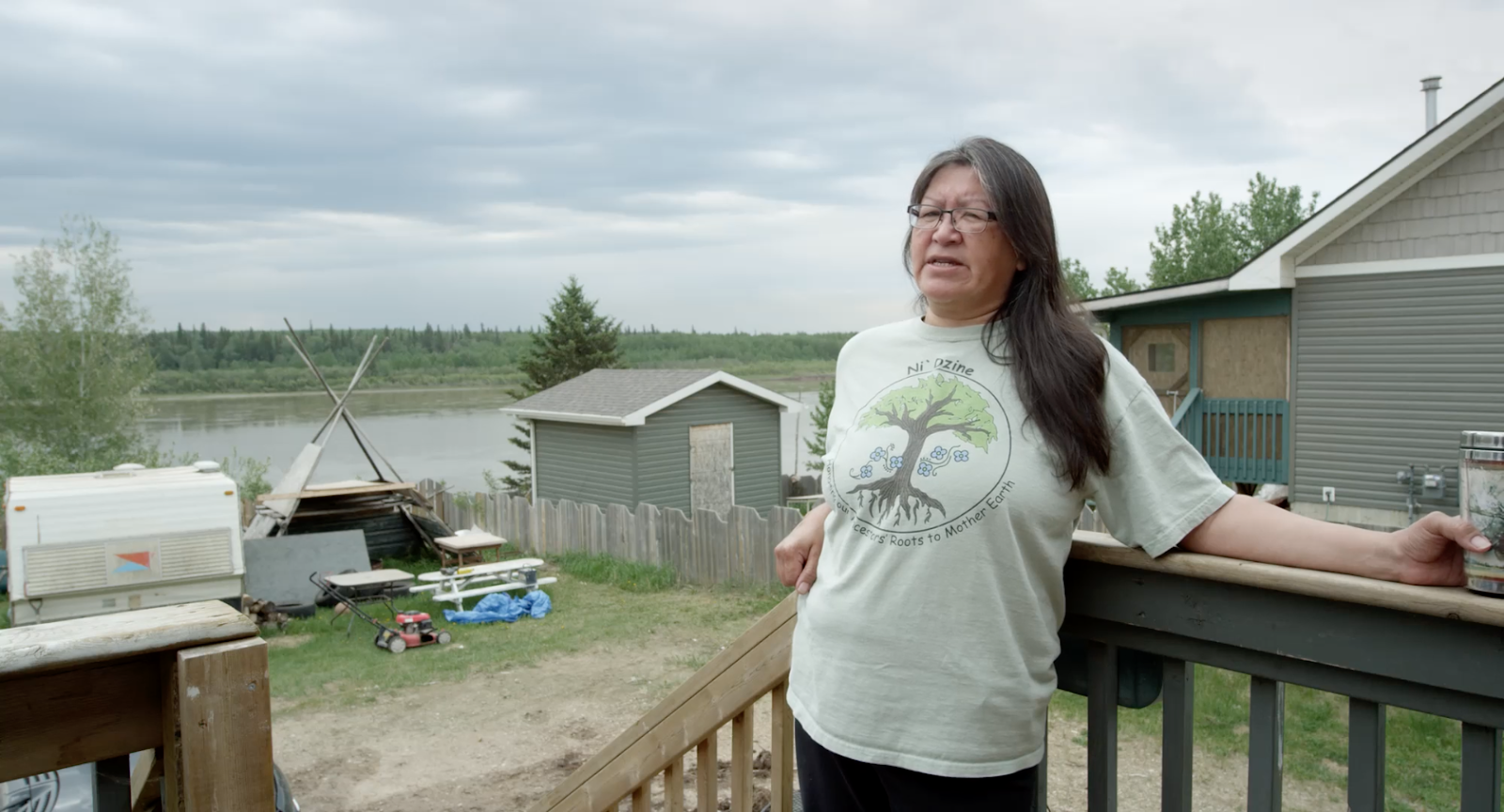
Fort McKay, Canada (Image: Nikolaus Geyrhalter Filmproduktion GmbH)
The fate of indigenous peoples living on or near extractable resources is made worse by how much better custodians they are of the natural world than prospectors, dam builders and palm growers. As Ana María Hernández, head of IPBES, the UN body on biodiversity, put it in a recent interview:
“Local communities live on biodiversity and directly depend on ecosystem services… They have the authority to speak, but also offer solutions from their experience and their direct relationship with the ecosystems that provide them with sustenance. Not listening to them is the first error.”
Earth is due to be released in Austria in spring 2020. The worldwide release date hasn’t yet been confirmed.
